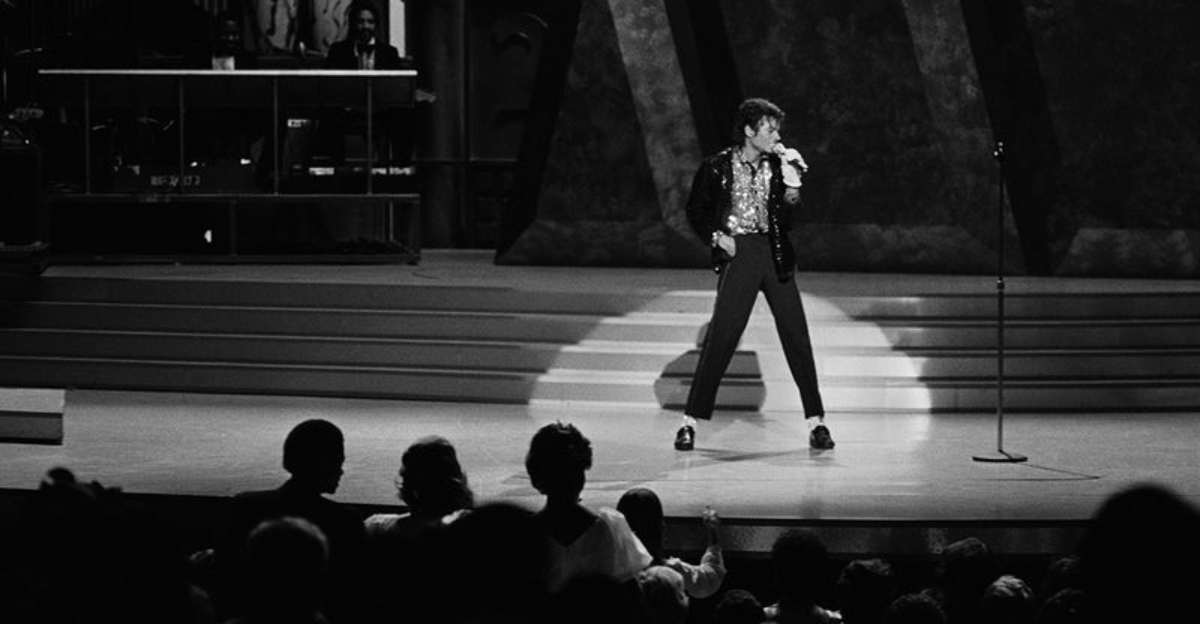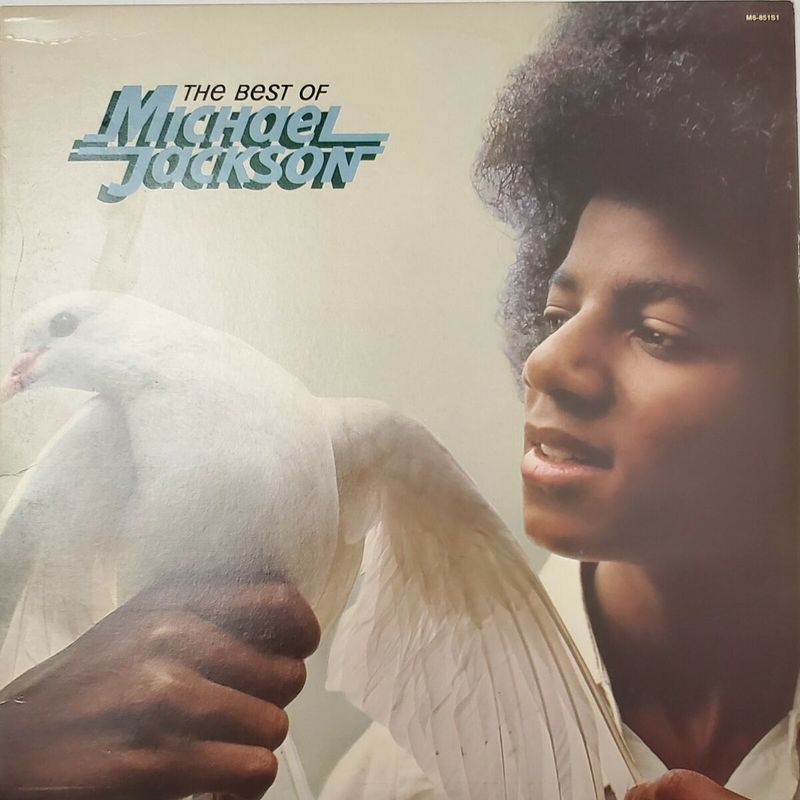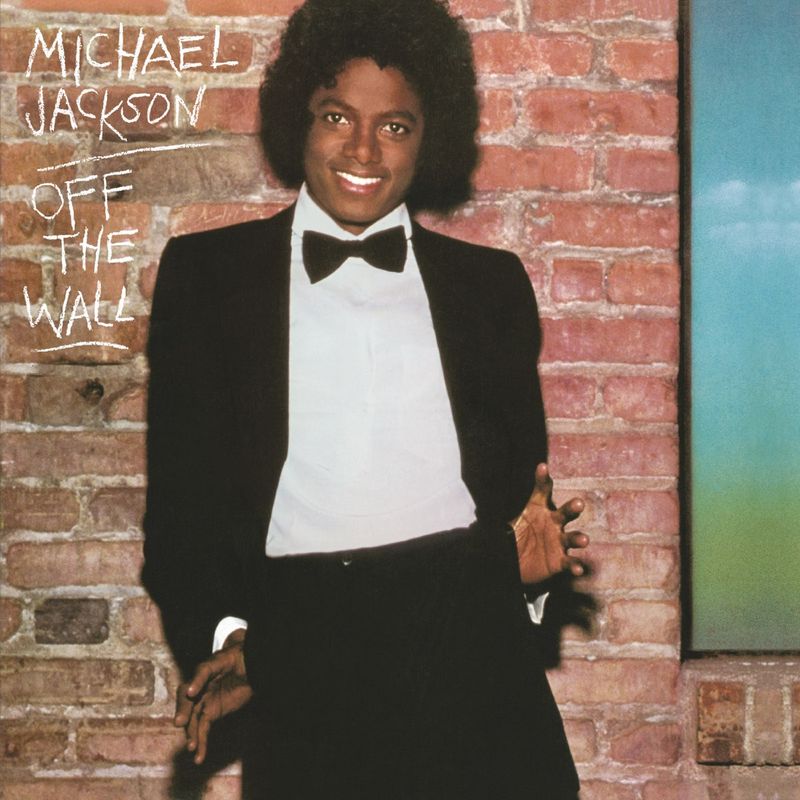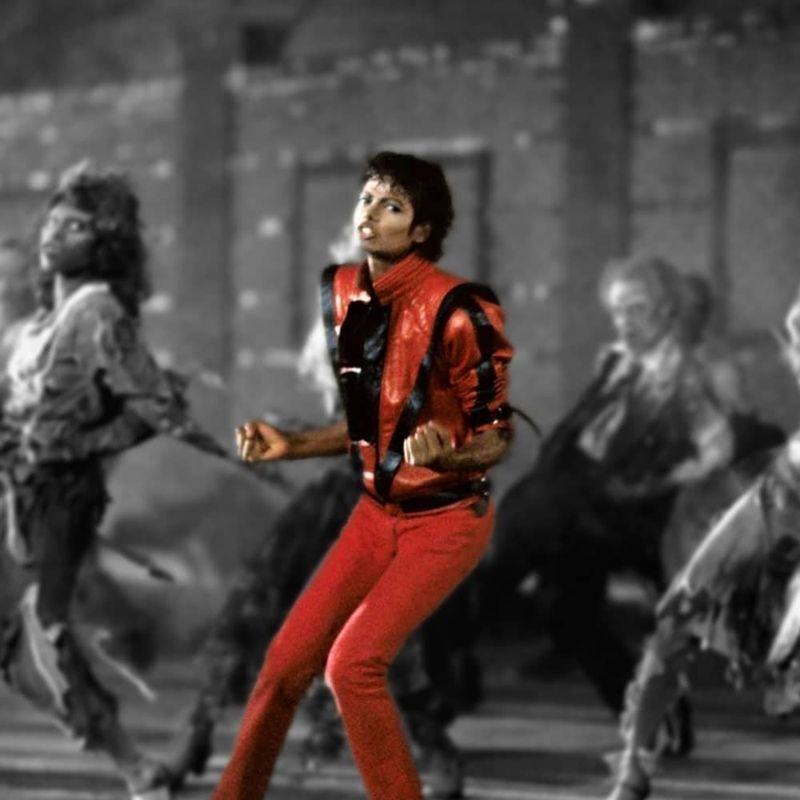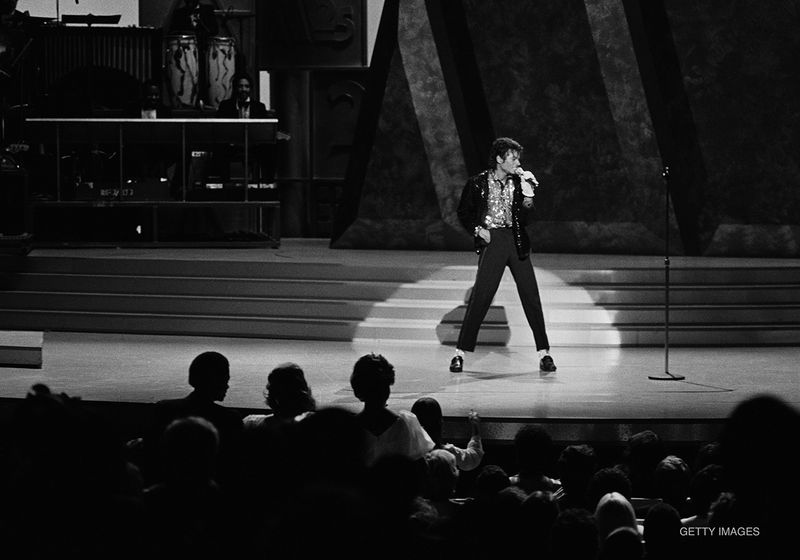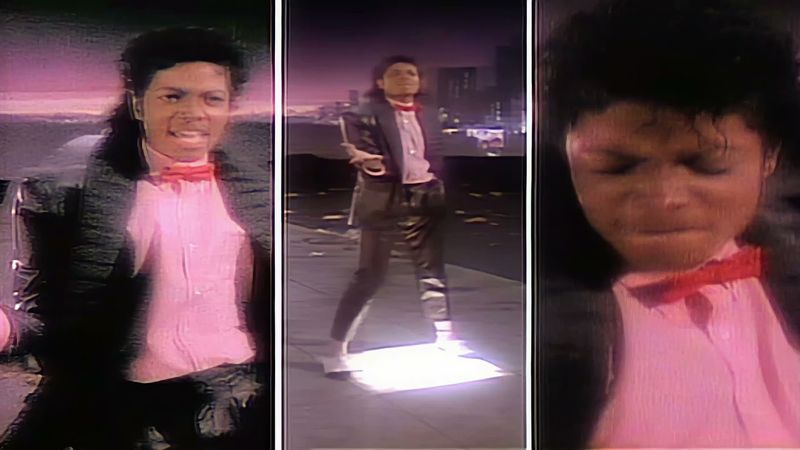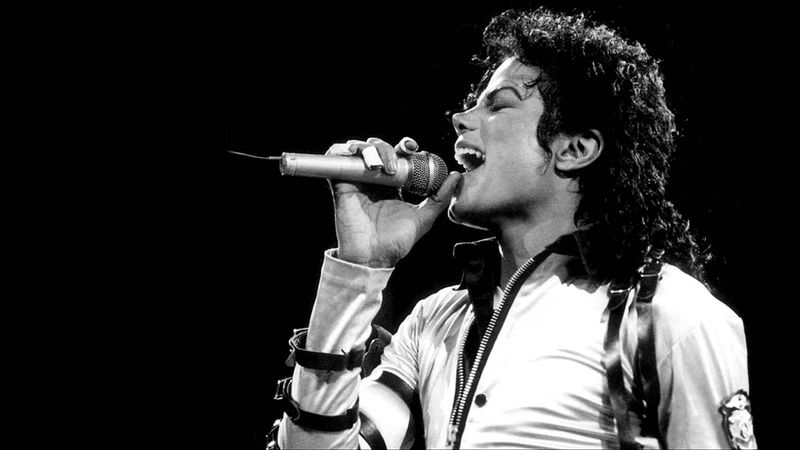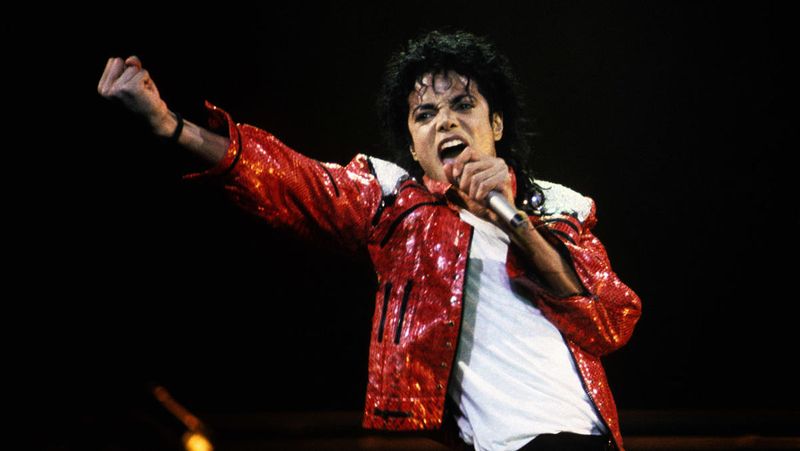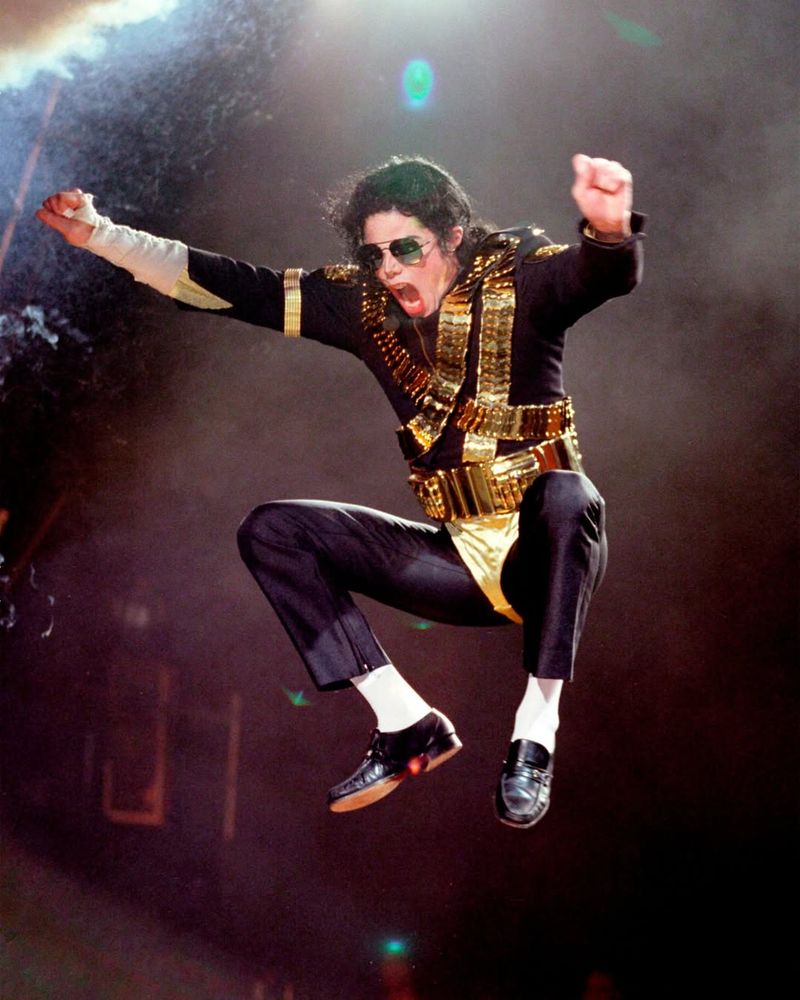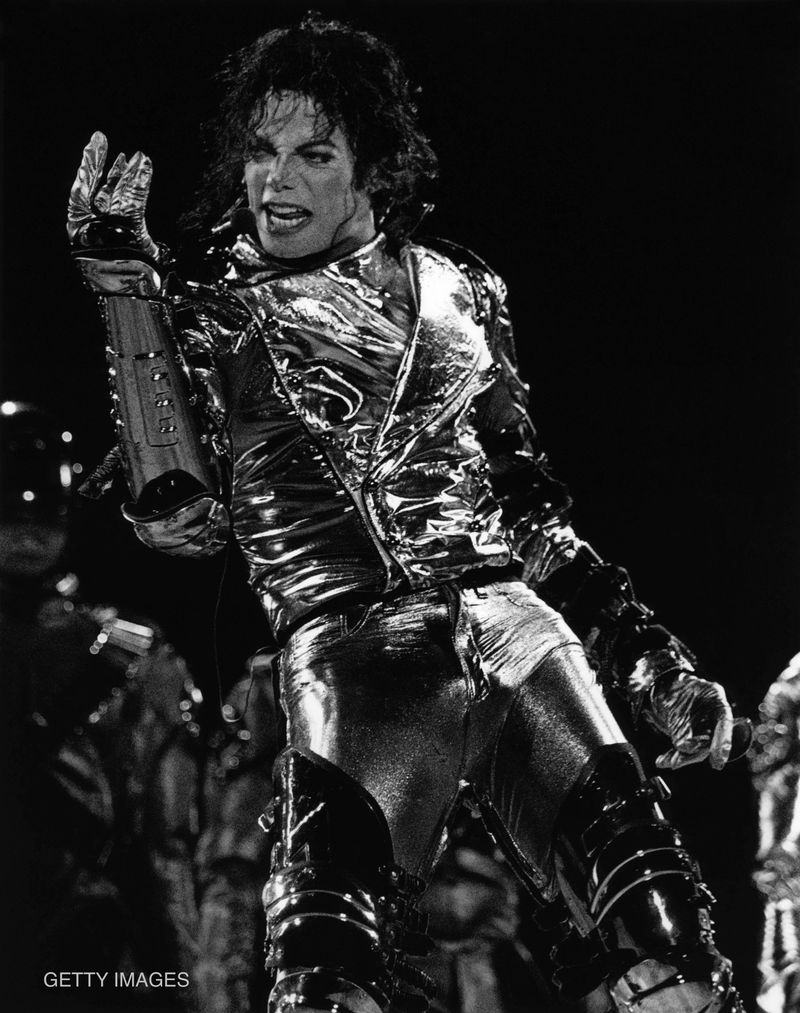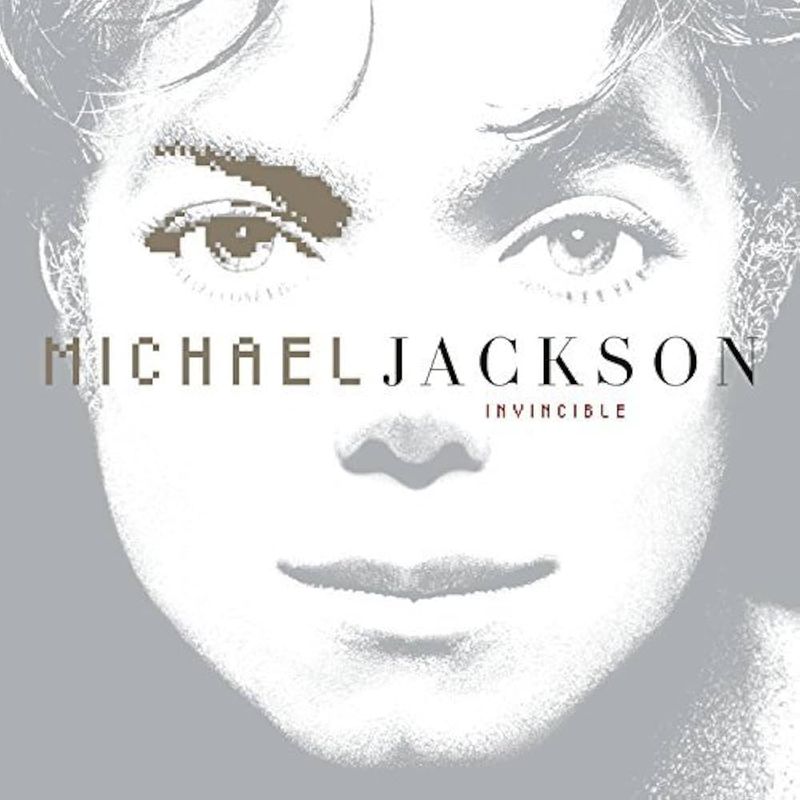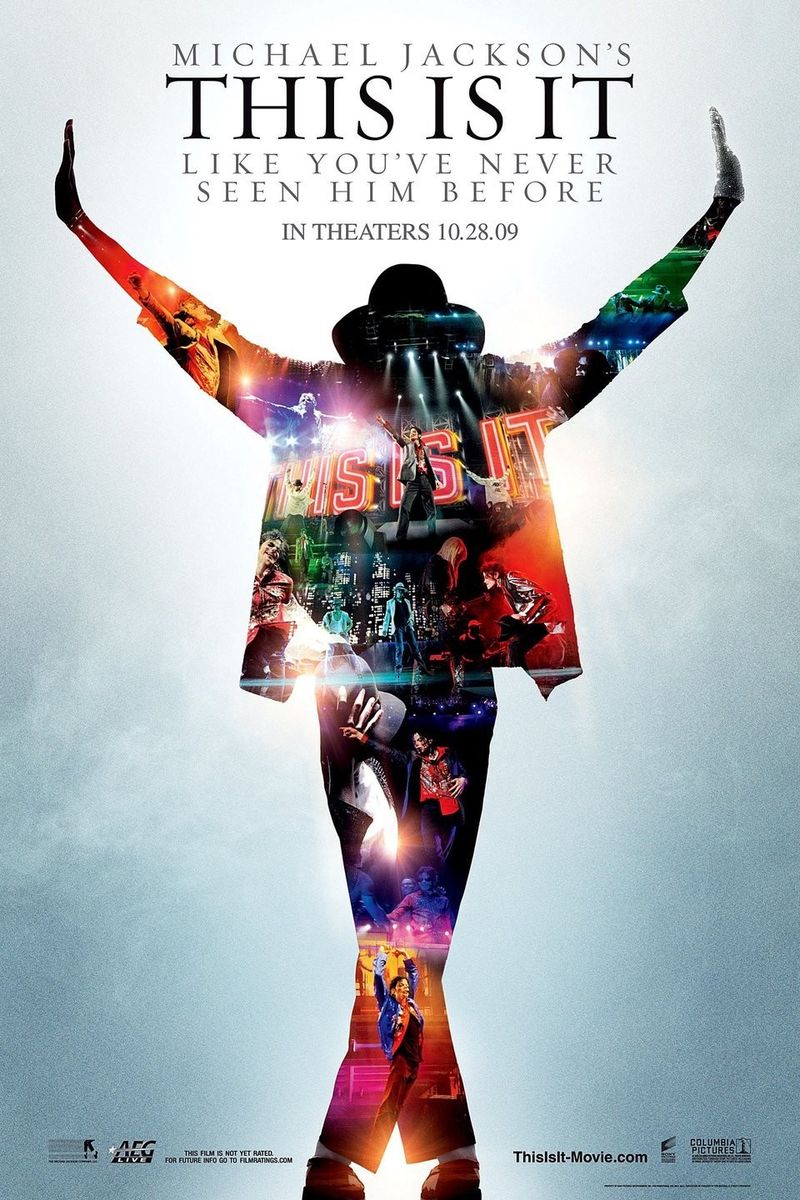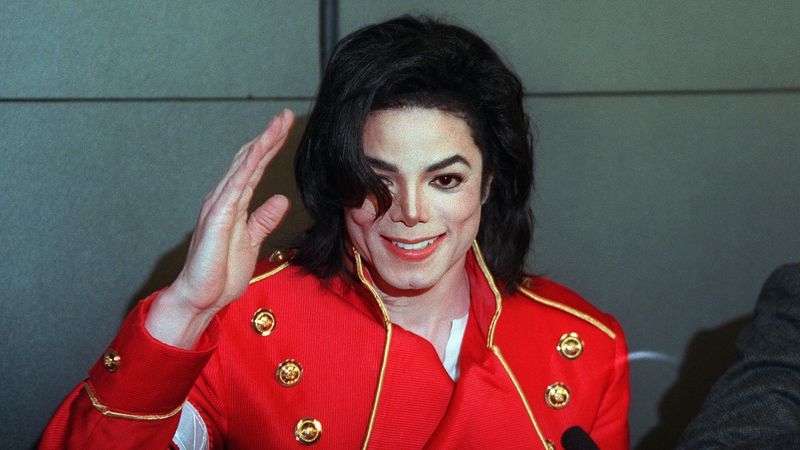Michael Jackson’s rise to superstardom began as the lead singer of The Jackson 5, where his electrifying voice and stage presence captivated audiences worldwide.
As a solo artist, he revolutionized the music industry with record-breaking albums like Thriller and game-changing music videos that set new standards.
From introducing the Moonwalk to delivering one of the most iconic Super Bowl halftime performances, his influence on pop culture remains unparalleled.
1. The Jackson 5 Era (1964-1975)
The Jackson 5, consisting of young Michael Jackson and his brothers, burst onto the music scene in 1964. Under Motown Records, they captured audiences with their catchy tunes and vibrant performances. Michael, even at a tender age, stood out with his extraordinary voice and charisma.
Their debut single, “I Want You Back,” was a massive hit, topping charts globally. The group’s success laid the foundation for Michael’s future as a solo artist.
Their relentless touring schedule and television appearances made them household names, transforming Michael into a teenage sensation and pop icon.
2. Breaking Free from Motown (1975)
In 1975, Michael Jackson took a bold step, parting ways with Motown Records to join Epic Records. This move was pivotal, allowing him creative freedom that Motown never afforded.
With Epic, Michael could explore his artistic vision, which was crucial for his growth as a musician.
This decision marked the beginning of his transition from a child star to an independent artist. It paved the way for his groundbreaking solo career, enabling him to develop a unique sound that would soon dominate the music industry. Michael’s journey to superstardom truly began here.
3. The Solo Breakthrough (1979)
In 1979, Michael Jackson released his first major solo album, “Off the Wall.” This album was a turning point, proving he was more than just a former child star. Collaborating with legendary producer Quincy Jones, Michael crafted a sound that blended pop, rock, and funk.
The album’s success was immense, with hits like “Don’t Stop ‘Til You Get Enough” showcasing his incredible vocal range and dance talent.
“Off the Wall” earned Michael his first Grammy Award and established him as a solo powerhouse. It set the stage for even greater achievements in the years to come.
4. The Thriller Phenomenon (1982)
Released in 1982, “Thriller” became the best-selling album of all time, revolutionizing the music industry. Michael Jackson, at 24, pushed creative boundaries with innovative music and captivating visuals.
The album featured hits like “Billie Jean,” “Beat It,” and the title track, setting new standards for pop music. Its success transcended cultural divides, making Michael a global icon.
The groundbreaking music video for “Thriller,” with its cinematic quality and iconic choreography, redefined the music video landscape. Michael’s genius and ambition were unrivaled, solidifying his status as the King of Pop.
5. The First Moonwalk (1983)
In 1983, Michael Jackson stunned the world with his first televised Moonwalk during the Motown 25th anniversary special. At 25, he performed “Billie Jean” with unmatched flair, introducing the iconic dance move that would become his signature.
The Moonwalk captivated audiences, showcasing Michael’s exceptional dance prowess and showmanship.
This performance cemented his status as a revolutionary artist, blending music and dance in ways never seen before. The Moonwalk became a cultural phenomenon, inspiring countless artists and fans worldwide. Michael’s legacy as a performer was forever immortalized with this unforgettable moment.
6. Revolutionizing Music Videos (1983-1989)
Between 1983 and 1989, Michael Jackson transformed music videos into a celebrated art form. His innovative approach turned them from simple promotional tools into cinematic experiences.
With videos for “Thriller,” “Billie Jean,” and “Bad,” he set new standards in creativity and production value. These videos were not just about the music; they told compelling stories with elaborate choreography.
Michael’s vision and attention to detail pushed the boundaries of what music videos could achieve, influencing the industry and inspiring future artists. His work during this period remains iconic, redefining pop culture and entertainment.
7. The Bad Era (1987-1989)
The release of “Bad” in 1987 marked another milestone in Michael Jackson’s career. At 29, he reinvented his image and sound, leading to a global smash album that was both commercially and critically acclaimed.
Hits like “Smooth Criminal” and “Man in the Mirror” showcased his versatility and depth as an artist. The accompanying world tour was a monumental success, further solidifying his international dominance.
Michael’s creativity during the Bad era demonstrated his ability to evolve continuously, keeping his music fresh and relevant. This period was pivotal in maintaining his status as a leading figure in pop music.
8. Becoming the King of Pop (1989-1991)
Between 1989 and 1991, Michael Jackson was officially dubbed the “King of Pop,” a title that has endured. Elizabeth Taylor famously crowned him with this moniker, recognizing his unparalleled influence in the music industry.
This era was marked by incredible achievements, including numerous awards and record-breaking sales. Michael’s ability to captivate audiences with his music and performance style was unmatched.
His influence extended beyond music, impacting fashion and dance. The “King of Pop” title encapsulated his legacy as an innovator and a cultural icon, forever altering the landscape of popular music.
9. The Dangerous Tour and Super Bowl Halftime Show (1992-1993)
In 1992 and 1993, Michael Jackson embarked on the Dangerous World Tour, captivating audiences globally with his electrifying performances. At 34, he also delivered one of the most iconic Super Bowl Halftime Shows in history.
His halftime performance was groundbreaking, incorporating elaborate stage effects and choreography that captivated millions of viewers.
The Dangerous Tour showcased his dedication to his craft, with each performance meticulously planned and executed. This period highlighted Michael’s enduring appeal and ability to innovate, solidifying his legacy as a consummate entertainer and a master of live performance.
10. Pushing Boundaries with HIStory (1995-1997)
Released between 1995 and 1997, the “HIStory” album was a bold statement of Michael Jackson’s artistry and personal struggles. At 37, he combined greatest hits with new tracks, addressing themes of isolation and media scrutiny.
Songs like “Scream” and “They Don’t Care About Us” showcased his willingness to tackle controversial topics and push creative boundaries.
The album’s ambitious scope and innovative sound were a testament to his resilience as an artist. “HIStory” reinforced his status as a creative visionary, unafraid to challenge norms and express his truth through his music.
11. The Invincible Album and Final Years (2001-2009)
From 2001 to 2009, Michael Jackson released his final full studio album, “Invincible.” At 43, he continued to innovate, experimenting with new sounds and collaborations.
Despite mixed reviews, the album was a commercial success, featuring hits like “You Rock My World.” Michael’s dedication to his craft remained evident, even as he faced personal challenges.
During these years, he planned a major comeback tour, signaling his enduring passion for music. Tragically, his career was cut short in 2009, leaving a void in the music world. His influence, however, continues to resonate globally.
12. The This Is It Tour That Never Was (2009)
In 2009, Michael Jackson was preparing for his highly anticipated This Is It tour. At 50, he rehearsed tirelessly, determined to deliver a spectacular show for his fans.
The tour promised to be a grand comeback, featuring his greatest hits and new performances. However, his untimely death just weeks before the first concert devastated fans worldwide.
The planned tour showcased Michael’s commitment to perfection and his desire to connect with audiences one last time. His passing left the world mourning the loss of a legendary artist, but his spirit and music continue to inspire.
13. Posthumous Legacy (2009-Present)
Since his passing in 2009, Michael Jackson’s legacy has continued to thrive. His influence on music, fashion, and pop culture remains profound, inspiring new generations of artists.
Posthumous releases and projects, like the “This Is It” documentary, have celebrated his life and work. His estate has also curated exhibitions and reissues, keeping his memory alive.
Michael’s ability to transcend cultural and generational boundaries is unparalleled. His contributions to entertainment have left an indelible mark, ensuring his place as a timeless icon. The world continues to celebrate and honor the incredible legacy of the King of Pop.
